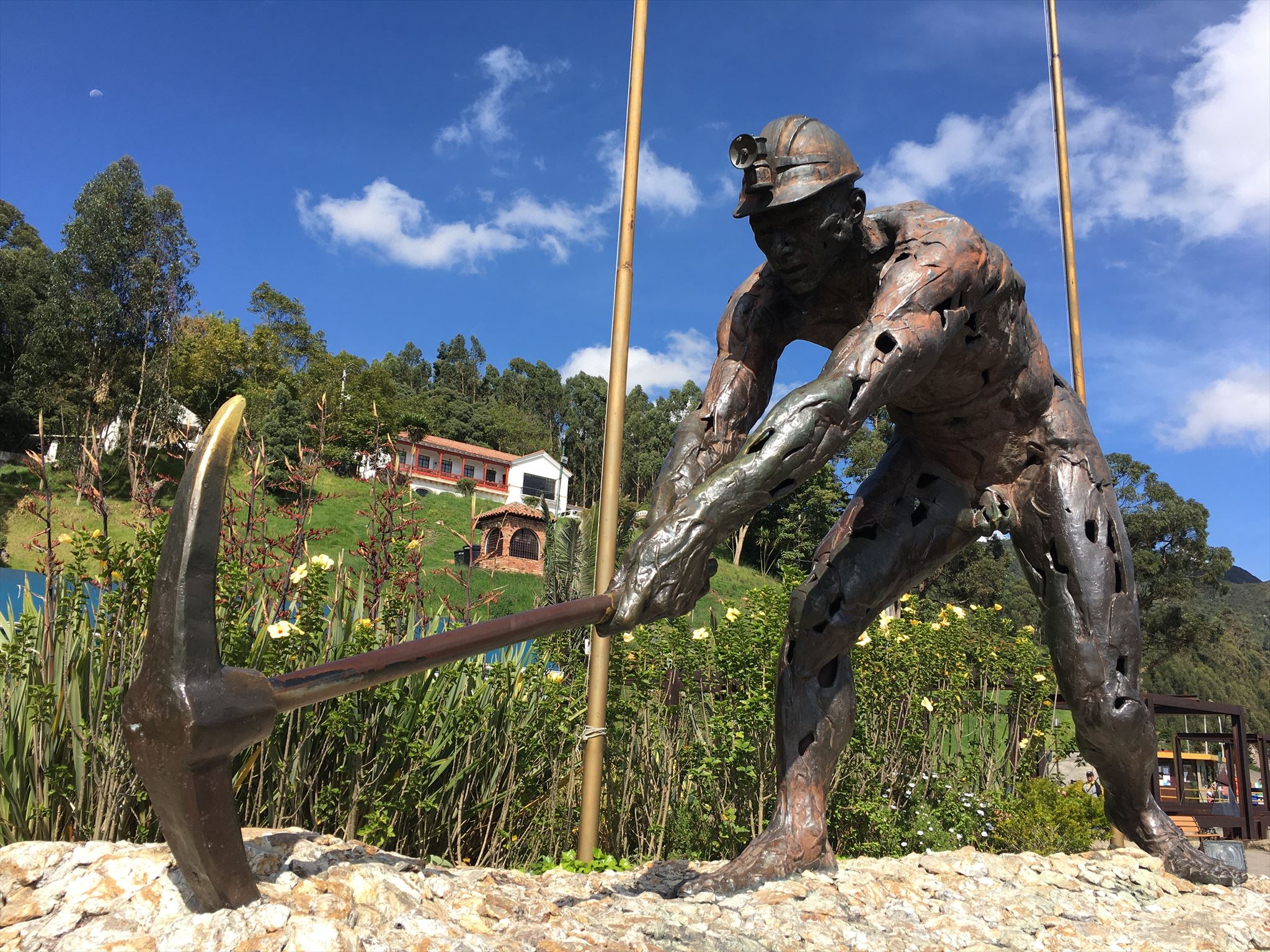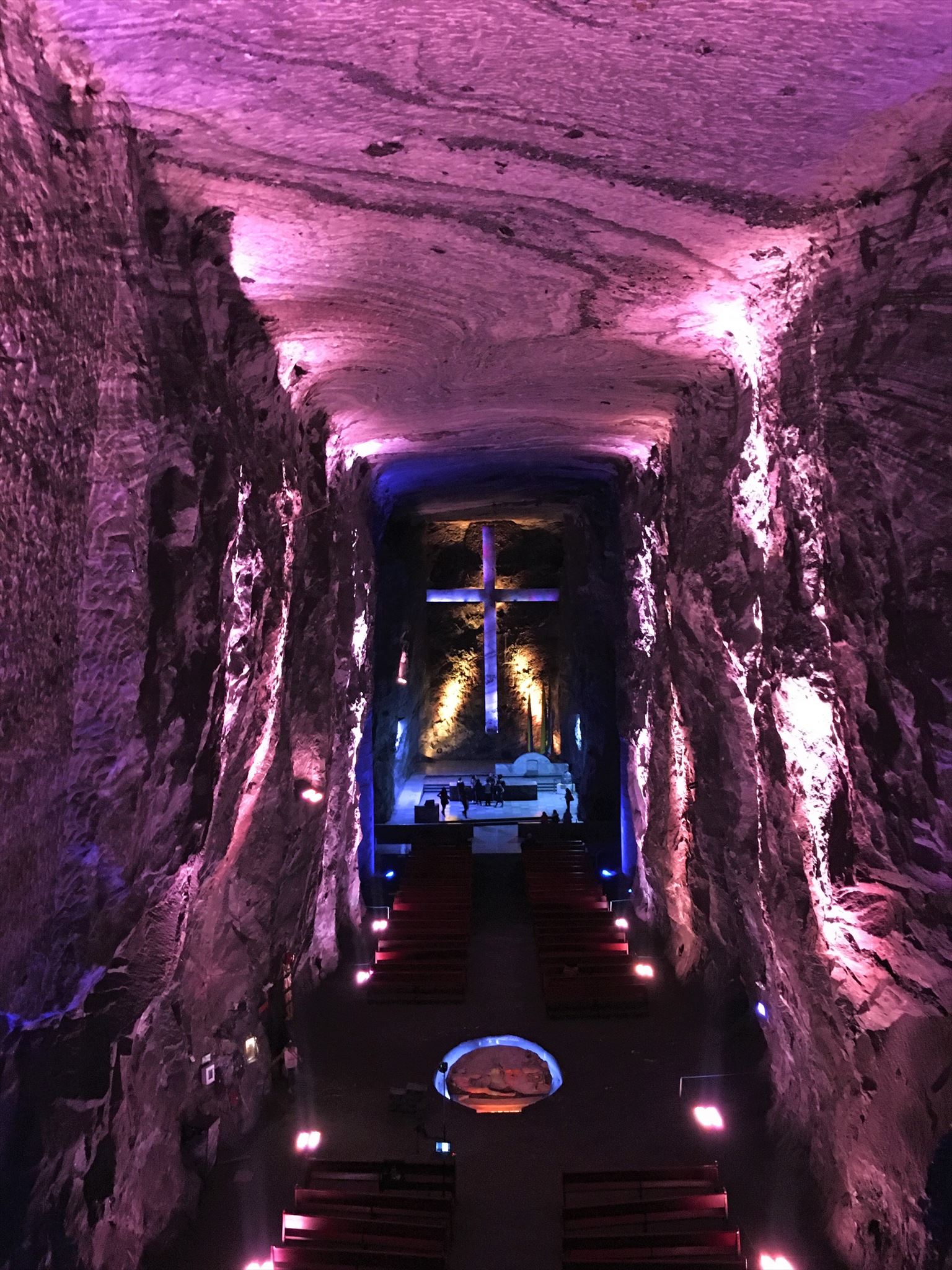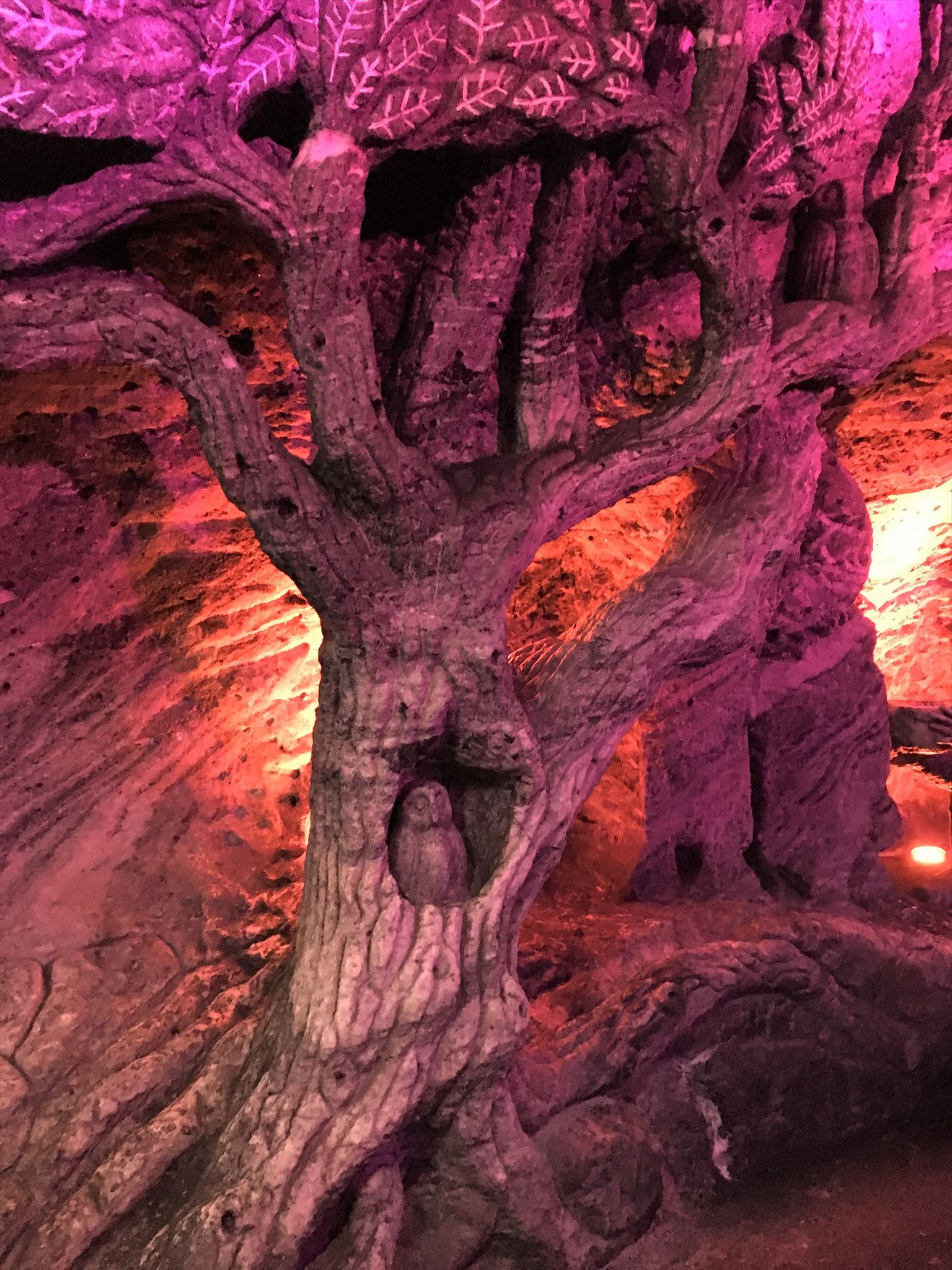Bienvenido a la Catedral de Sal de Zipaquirá
Welcome to the Salt Cathedral of Zipaquirá

La Catedral de Sal está abierta todos los días de 9:00 a.m. a 6:00 p.m. Las horas pueden cambiar en cualquier momento, así que verifica los horarios o llama al parque antes de hacer el viaje aquí.
The Salt Cathedral is open daily 9:00AM - 6:00PM. The hours can change at any time so please check the hours or call the park before you make the trip out here.

Debido a que este es un lugar de culto religioso, los domingos pueden ser muy ocupados con las personas que visitan el parque.
Due to the fact that this is an actual place of worship, Sundays can be quite busy with people visiting the park.

***Ten cuidado al caminar en esta área porque la luz en algunas áreas es limitada y el camino no es completamente liso y nivelado.***
***Please be careful when walking in this area because the light in some areas is limited and the path is not entirely smooth and level.***

Los depósitos de sal en Zipaquirá se formaron hace unos 250 millones de años, y se elevaron sobre el nivel del mar durante el período terciario tardío, cuando se formaron las montañas de los Andes. La halita, o sal de roca, se forma en rocas sedimentarias cuando se seca un gran cuerpo de agua cerrado. A medida que se formaban las montañas en esta área, el gran cuerpo de agua que una vez la cubrió, se secó y dejó un enorme depósito de sal enterrado debajo de la tierra y el barro. Este se solidificó hasta convertirse en rocas de sal. Según American Mine Services, esta mina de sal es la más grande de Colombia y una de las más grandes del mundo.
La halita, o sal de roca, puede tener diferentes colores según el mineral presente en la composición. Algunos ejemplos de diferentes colores de sal son: azul (sulfato de cobre), amarillo (sulfato ferroso), verde (carbonato de cobre) y rojo (nitrato de hierro). La mayoría de las rocas de sal que encontrarás aquí son de diferentes tonos de gris. Hay algunas áreas donde la sal es de color blanco y esto se debe al contacto con la humedad que se filtra desde el suelo.
Al estar cerca de la superficie, el agua se filtra a través de la cual cristaliza la sal. Esto también hace que se formen estalactitas. Las estalactitas son una estructura cónica que cuelga como un carámbano del techo de una cueva, formada por sales de calcio depositadas por el goteo de agua.
La humedad también puede debilitar el campo de sal, por lo que, como precaución, se instalaron arcos de acero (conocidos como arcos ingleses) junto con troncos de eucalipto. La madera absorbe la humedad que se filtra y la sal eventualmente petrifica la madera haciéndola más fuerte.
Las galerías de sal de Zipaquirá se crearon en 1978 y tienen un total de 180 galerías, de las cuales solo 24 están relacionadas con la Catedral de Sal por la que estás caminando hoy. Después de completar sus turnos agotadores en las minas cercanas, los mineros luego vendrían aquí para trabajar en estas galerías. No se les pagó extra por hacer esto y lo hicieron por su devoción a su religión. Estas galerías terminadas se consideran uno de los logros más notables de la arquitectura colombiana.
***Deberás obtener los auriculares con audioguía en la taquilla (punto de referencia 1) para responder algunas de las preguntas. Puedes responder la pregunta n° 1 antes o después de visitar la mina.***
- En el punto de referencia 2 (La Estatua del Minero) describe la roca en la que te encuentras. ¿Qué colores ves? ¿Es la roca lisa o rugosa? ¿Es una roca grande o son rocas individuales más pequeñas en una pila?
- 2. Al entrar en el túnel, verás los arcos ingleses. ¿Ves alguna estalactita? Si es así, calcula su longitud y cuánto tiempo crees que les tomó formarse.
- ** Las estaciones 01 y 02 son diferentes de las estaciones 1 y 2 ** Al pasar de la estación 1 a la estación 2, ¿qué hueles?
- ¿Por qué algunas áreas se ven más oscuras y otras más claras? ¿Por qué algunas áreas son blancas?
- En la estación 16, esta área está totalmente tallada, con qué tipo de piedra y por qué? ¿Qué tiene de diferente la estatua que está aquí (Sugerencia: es un tipo diferente de piedra del resto de la estación)?
- Desde la estación 16, mientras observas la galería principal, calcula la altura y el ancho de la habitación.
- Foto opcional: Soy una persona visual y me encanta tomar fotos. Siéntete libre de tomar y publicar fotos con tus registros; ¡Me encantaría ver la experiencia a través de tus ojos!
Lo más importante, ¡diviértete aquí! Ya sea que seas una persona religiosa o no, este es un lugar increíble para experimentar de primera mano y espero que disfrutes tu visita!

Salt deposits in Zipaquirá were formed around 250 million years ago, and were raised above sea level during the late Tertiary period, when the Andes Mountains were formed. Halite, or rock salt, forms in sedimentary rocks when a large, enclosed body of water dries up. As the mountains in this area were forming, the large body of water which once covered this area dried out and left an enormous deposit of salt buried below the earth and mud. It solidified until it became rocks of salt. According to American Mine Services, the salt mine here is the largest in Colombia and one of the biggest in the world.
Halite, or rock salt, can be different colors depending on which mineral is present in the composition. Some examples different colors of salt are: Blue (Copper Sulphate), Yellow (Ferric Sulphate), Green (Copper Carbonate), and Red (Iron Nitrate). Most of the salt rocks you will find here are different shades of gray. There are some areas where the salt is white in color and this is due to contact with moisture which seeps in from the ground above.
There are some areas where the salt is white which is due to contact with moisture. Being close to the surface, water seeps through which crystalizes the salt. This also causes stalactites to form. Stalactites are a tapering structure hanging like an icicle from the roof of a cave, formed of calcium salts deposited by dripping water.
Moisture can also weaken the salt field so as a precaution, steel arches (known as English Arches) were installed along with eucalyptus logs. The wood absorbs the moisture that seeps through and the salt eventually petrifies the wood making it stronger.
The salt galleries of zipaquira were created in 1978 and have a total of 180 galleries, of which only 24 of them are related to the Salt Cathedral that you're walking through today. After completing their grueling shifts in the mines nearby, miners would then come here afterwards to work on these galleries. They were not paid extra to do this and did it out of their devotion to their religion. These finished galleries are considered to be one of the most notable achievements in Colombian architecture.
***You will need to get the audio guide headset at Waypoint 1 to answer some of the questions. You can answer question #1 either before or after visiting the mine***
Questions:
1. At Waypoint 2 (The Miner Statue) describe the rock on which he stands. What colors do you see? Is the rock smooth or rough? Is it one big rock or smaller individual rocks in a pile?
2. As you enter the tunnel, you will see the English Arches. Do you see any stalactites? If so, estimate their length and how long do you think it took them to form?
3. **Station 01 and 02 are different from Station 1 and 2** As you make your way from Station 1 to Station 2, what do you smell?
4. Why do some areas look darker in color and some look lighter? Why are some areas white?
5. At Station 16, this area is entirely carved out of what type of stone and why? What is different about the statue that is here (Hint: it's a different type of stone from the rest of the station)?
6. From Station 16, as you look out over the main gallery, estimate the height and width of the room.
7. Optional Photo: I am a visual person and love taking pictures. Feel free to take and post pictures with your logs; I'd love to see the experience through your eyes!
Most importantly, have fun here! Whether you are a religious person or not, this is an amazing place to experience firsthand and I hope you enjoy your visit!